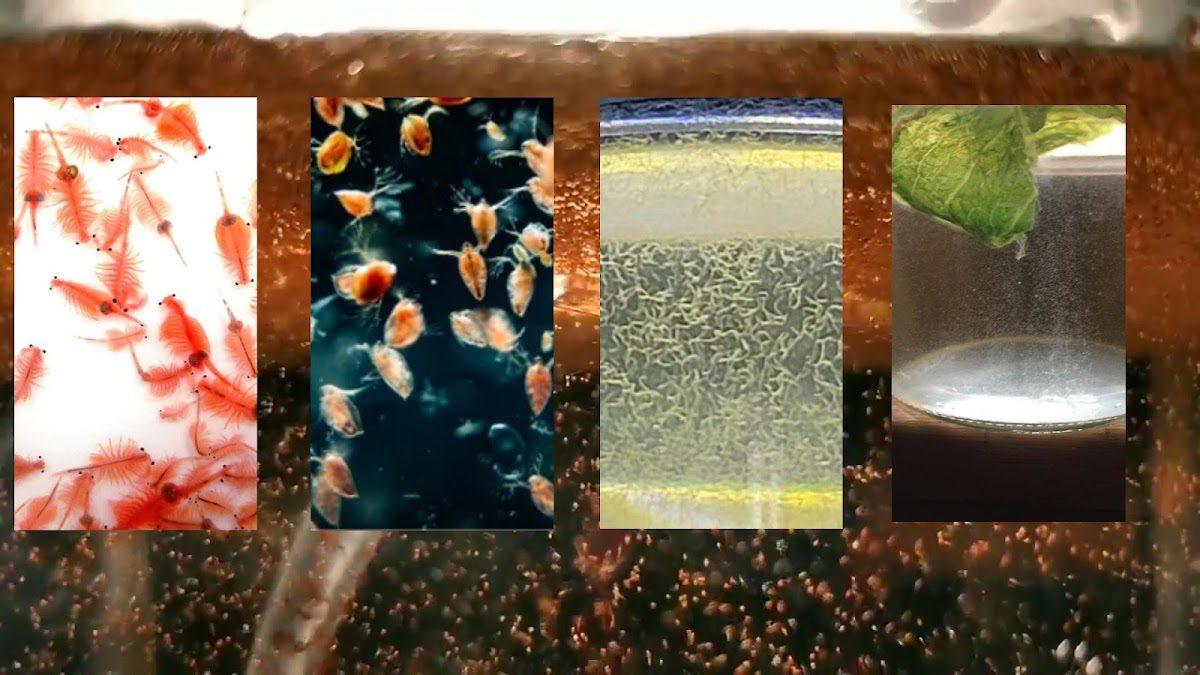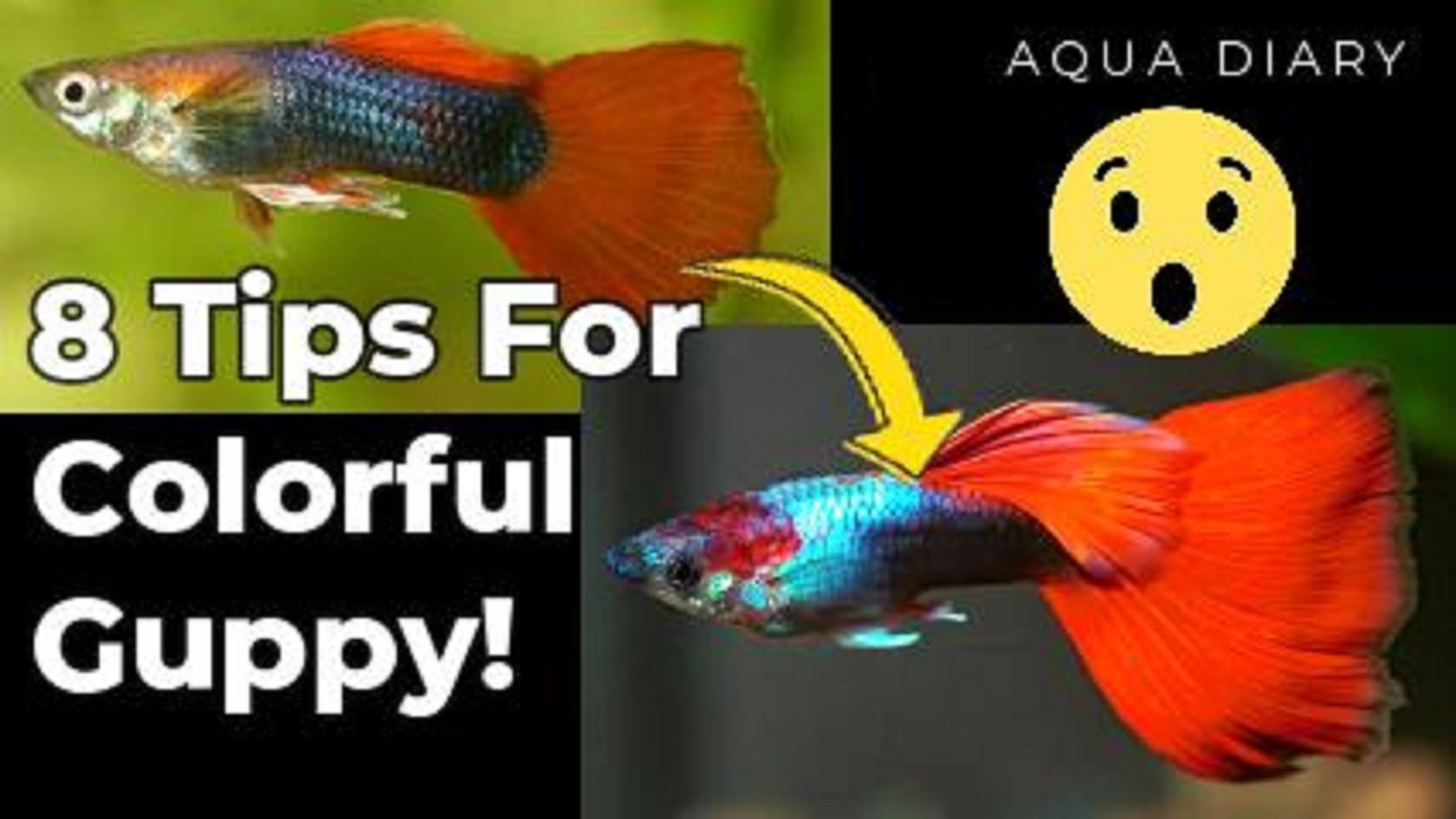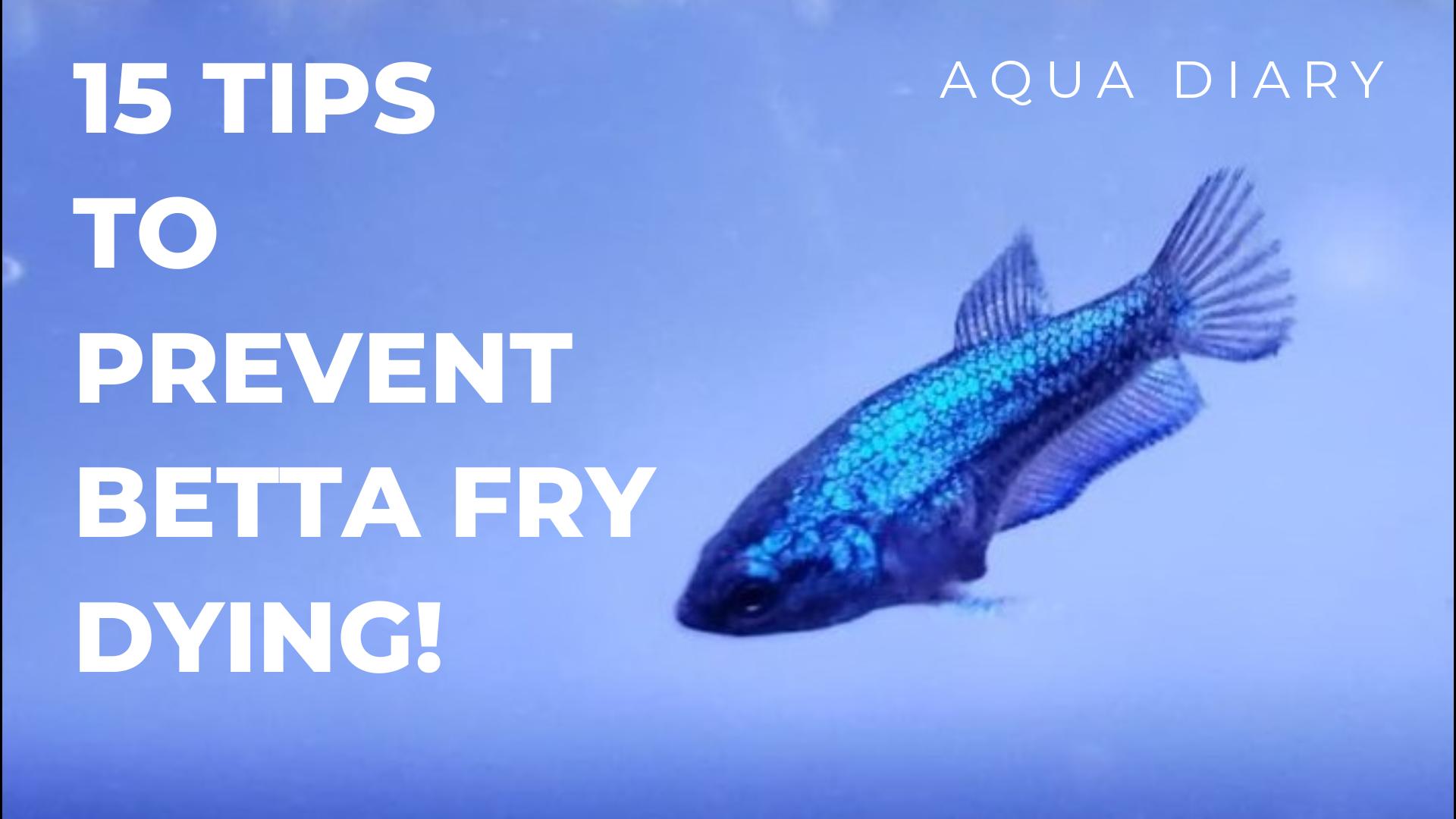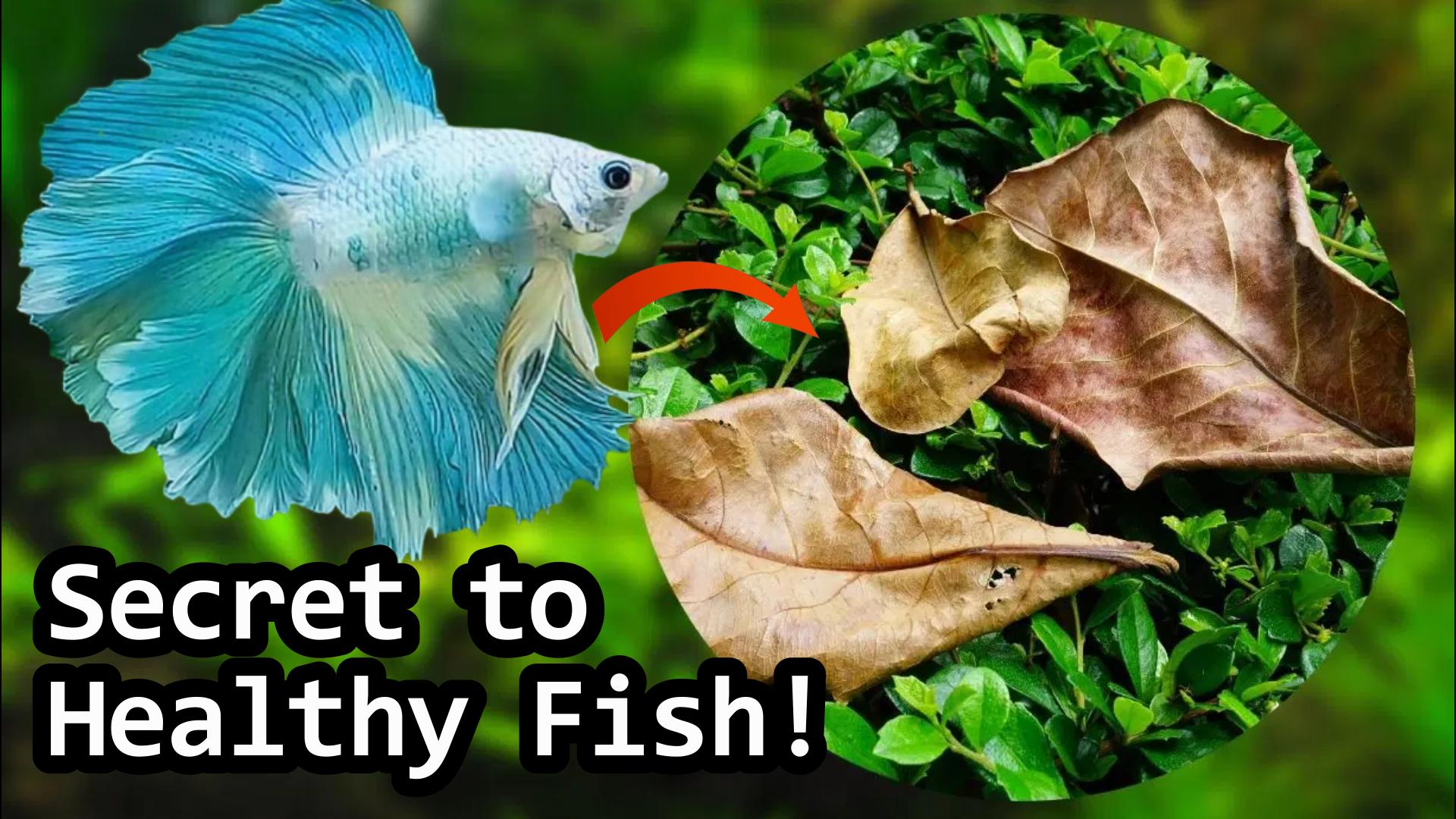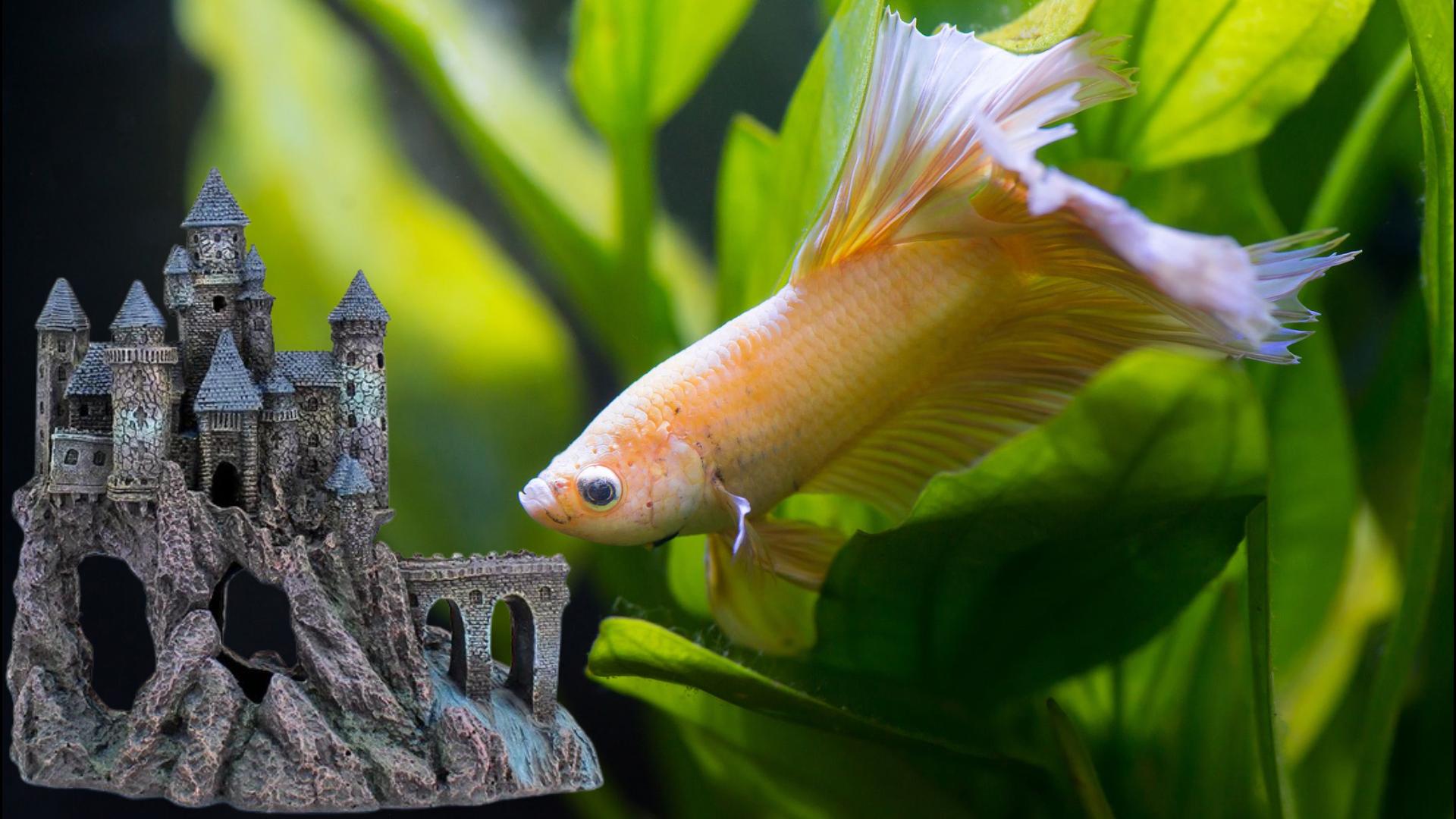Welcome to the world of Betta fish fry! These delicate creatures need the right nutrition to grow healthy and strong. The live foods are full of protein, which is essential for betta fry to grow and develop. We’ll explore the best live food for Betta fry and how to cultivate them at home. Let’s get started.
So why live food?
As per my experience, Betta fry fed a diet high in protein, like the one they would find in the wild, grow faster and stronger. Live foods like brine shrimp, daphnia, vinegar eels, Infusoria, and microworms provide essential vitamins, minerals, and nutrients for their growth and development. Live foods mimic the natural diet of betta fry in the wild, which can reduce stress and promote a sense of well-being. As a betta breeder, live foods are great options to speed up your fish’s growth and success rate.
Infusoria – live food for Betta
Starting with Infusoria, this single-celled organism can be found in water and provides a natural source of nutrients and bacteria for Betta fry. Infusoria is a great first food for newly hatched Betta fry as it is small and easy to consume. It provides a natural source of nutrients and bacteria.

Steps to culture Infusoria
You will need green vegetables such as lettuce, spinach, green cabbage, green beans, and peas to culture Infusoria. You can use canned or fresh vegetables and even mix different types to encourage a variety of microorganisms to grow. Chop your leafy greens into 1 to 2-inch pieces and shell the green beans or peas. Place the pea shells in the jar along with the chopped vegetables. Bring a kettle of water to a boil and carefully pour it into the jar until it’s 1/3 full. Let the water cool until it’s warm to the touch. Once the water in the jar is warm, slowly pour in water from an existing aquarium.

This will introduce microorganisms that will help your Infusoria grow. Set the jar in a sunny spot near a window and cover it with a light cloth such as cheesecloth to prevent debris from falling in. Sunshine will help the vegetables break down, creating bacteria for the Infusoria to feed on. Wait for 2 to 3 days and watch as the water becomes cloudy and then clearer as the Infusoria grows. Once the water is clear, your Infusoria is ready to feed your Betta fish fry.
Vinegar eels
Vinegar eels are probably the easiest food to culture. My cultures have survived for probably two years without maintenance, harvest, or attention. They’re small nematodes that you can grow in a culture. Unlike microworms, vinegar eels can live in freshwater for an extended period of time, which is good for betta fry.

Steps to culture Vinegar eels:


Prepare the setup with a bottle, of apple cider vinegar, apple slices, and vinegar eel culture. You can buy vinegar eel culture from your local pet store or breeder to begin with. It’s also possible to start a vinegar eel culture without a starter culture, but it may take about a month. A clear plastic container with a lid works well, or you can use a small aquarium. Pour apple cider vinegar into the container, add a few apple pieces, and stir everything together. Keep the container in a warm location, around 75-80 degrees Fahrenheit. Just cover the bottle with cloth or paper to keep insects out.
However, do not close the bottle with a cap that blocks the air. Once the eels have hatched, it may take a few days, but you can feed them to your betta fry. Keep in mind that harvesting vinegar eels requires a bit of patience. The easiest way to do this is to close the bottle with cotton and put water on top of it. This will cause the eels to automatically come up to the surface in order to breathe. In this way, it is easy to capture them for feeding.
Boiled Egg – live food for Betta
The egg may not be a live food, but it is a great alternative to live foods and an excellent backup option when there are no other live foods. This is a great way to provide them with the necessary nutrients for their growth and development. The yolk of a boiled egg is a rich source of protein and essential fatty acids, which are crucial for the growth and health of Betta fish fry.

Steps to feed a boiled egg.
After the egg is fully cooked, peel it and mash the yellow egg with your hand or a fork. Add a small amount of water to the mashed egg to create a soft, wet mixture. Filter the mixed water using a cloth or a fine filter. Using a syringe or dropper, drop small portions of the egg mixture into the aquarium of betta fry. Observe the fry to ensure they are eating the egg mixture. Often, it can be easy to overfeed them with eggs. Overfeeding can ruin the water, so be careful about feeding the right amount. Consuming a diet that includes egg yolk can have a positive impact on the growth and development of Betta fish fry. It can help them grow faster, become stronger, and have a better chance of surviving.
Microworms – live food for Betta
These are small worms that can be grown in a culture. They are a great food source for betta fry as they are small and easy to consume. After you have fed your newly hatched fry with informed, microforms are a great addition before transferring them to baby brain shrimp or any other live food. They range in size from 1 to 3 mm in length, which is slightly bigger than vinegar eels.

Steps to culture microworms:
Start your Daphnia culture by acquiring a starter, available online or at pet stores, with roughly 30-40 Daphnia per container. To acclimate them, immerse the bag in your tank for about 30 minutes, matching the temperature. Carefully release the Daphnia into the tank by opening the bag or container. Maintain water quality by changing 10-20% weekly, favoring dechlorinated or old aquarium water over tap water. Since Daphnia thrive in algae-rich environments, leave the green water untouched. You can create this by exposing a bin of water with some grass clippings or using plant fertilizer. Feed them 1-3 pinches of active yeast daily, adjusting as needed based on water clarity. Monitor their health daily, avoiding sudden environmental changes. After approximately 1.5 weeks, if the culture is thriving, harvest around a quarter of the Daphnia using an appropriately sized aquarium net, ensuring to skip the young ones.
You will know your worms are ready to harvest when you start seeing worms moving up the sides of the container. Once they start climbing out of the medium and up onto the walls, simply use your fingertip or a small brush to wipe along the sides of the plastic tub. Dunk the worms directly into the tank to feed the fish.
Baby brine shrimp – live food for Betta
These are small shrimp that can be hatched from brine shrimp eggs. They are a great food source for betta fry as they are rich in protein and easy to consume. There are several reasons why brine shrimp are an ideal food for betta fish fry. The natural movement of brine shrimp attracts baby Betta fish to eat them. Newly hatched brine shrimp are used by almost all individuals who breed and feed live food to betta fish at home or on fish farms.

Steps to culture baby brine shrimp
Start by purchasing a brine shrimp hatchery. These can be found in most pet stores or online. Fill the hatchery with water and add the brine shrimp eggs. Add a small amount of aquarium salt to the water to create a saline environment. Place the hatchery in a warm location with a temperature between 75-80 degrees Fahrenheit. The warmer the water, the faster the eggs will hatch. Wait for the eggs to hatch, which usually takes around 24-48 hours. Once the eggs have hatched, you can feed the brine shrimp to your Betta fry. Harvesting baby brine shrimp is an easy process too. They are attracted to a light source. Usually, you can collect them at the bottom using a light source.
Daphnia – live food for Betta
Daphnia also known as “Water fleas” is a highly nutritious live food that most aquarists utilize in feeding tropical fish. These are small crustaceans that can be found in ponds and lakes. They are a great food source for betta fry as they are rich in protein and easy to consume.
Steps to culture Daphnia:
Start your Daphnia culture by acquiring a starter, available online or at pet stores, with roughly 30-40 Daphnia per container. To acclimate them, immerse the bag in your tank for about 30 minutes, matching the temperature. Carefully release the Daphnia into the tank by opening the bag or container. Maintain water quality by changing 10-20% weekly, favoring dechlorinated or old aquarium water over tap water. Since Daphnia thrive in algae-rich environments, leave the green water untouched. You can create this by exposing a bin of water with some grass clippings or using plant fertilizer. Feed them 1-3 pinches of active yeast daily, adjusting as needed based on water clarity. Monitor their health daily, avoiding sudden environmental changes. After approximately 1.5 weeks, if the culture is thriving, harvest around a quarter of the Daphnia using an appropriately sized aquarium net, ensuring to skip the young ones.
It’s a simple and easy process to harvest your live Daphnia from your tank. Gently scoop the strainer through the high-density Daphnia at the water surface to get as much as you can. These Daphnia are light brown in color, so you will see a lot of them at the bottom of the net. They are good for feeding your betta fry.
Helpful tips on retaining betta fry cultures – live food for Betta
Having a small tank with additional cultures will ensure that if one culture dies you’ll have a backup. Set up at least 2 different tanks to house your fry cultures. You should always start cultivating your fry food a few days before you start breeding your Betta, so you have it ready and available when they hatch. You should feed your fish less and a few times a day instead of overfeeding. Make sure the culture is good before you feed it to your fish. Bad cultures can hurt them.
Live foods are essential for the growth and development of betta fry. I hope this blog helped you out and gave you some ideas on how to cultivate live betta fry food. We have plenty of betta fish care and breeding tips in the blog space. Please take a look. See you on the next topic.

